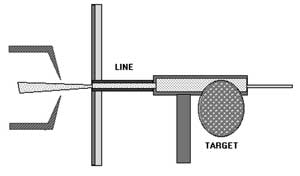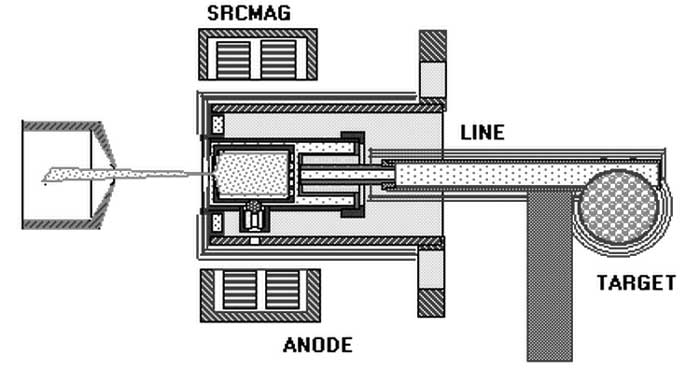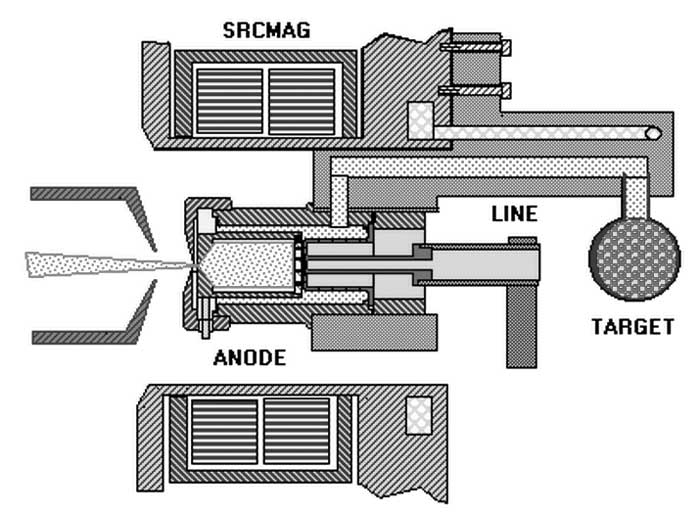ISOLDE Upgrade (GUI)
The group for the upgrade of ISOLDE, GUI, collects information and discusses necessary actions for the upgrade of the ISOLDE facility. The committee meets twice a year. The priorities for Target and Ion source R&D are discussed in the September meeting. More information can be found via http://isolde.web.cern.ch/group-upgrade-isolde-gui#overlay-context=experiment-and-collaboration-committees .
Targets
The heart of an on-line isotope separator is its target and ion source. The target should assure a fast liberation of the radioactive nuclei produced in large amounts of target material. The combination with the ion-source should be able to produce an ion beam which preferably should only contain isotopes from one chemical element. The development of this experimental technique is a field of radiochemistry, which also involves metallurgy, high temperature chemistry and surface physics. The ISOLDE group has developed many different advanced target-ion-source combinations, which have allowed the users of the facility to study radioisotopes from more than 60 different elements. the elements for which beams are available at ISOLDE today are indicated in the periodic table, which also allows to obtain information on the produced quantities.
Some of the targets used at ISOLDE consist of molten metals kept at temperatures from 700°C and up to about 1400°C. Such targets are characterized by a relatively long release time of the produced isotopes and a typical time constant of the release is about 30 seconds. Faster release times, in the order of one second or less, can be obtained, if target material in the form of refractory metal powder, metals or carbides is used at temperatures above 2000°C. An expected decrease in the release time due to the "shock-wave" effect of the pulsed proton beam has been observed. Time constants down to some tenths of a second can be reached for the fastest targets.
There are three different types of ion source in use at ISOLDE: surface ion sources, plasma ion sources, and laser ion sources.
Surface ion sources
The surface ion source is the simplest set-up for ionizing atoms produced in the target. The ionizer consists only of a metal tube ("line"), for example tantalum or tungsten, which has a higher work function than the atom that should be ionized. Depending on the line's material it can be heated up to 2400°C. Surface ion sources have been used in combination with most of the different target materials.

Surface ion source
Plasma ion sources
The plasma ion source is used to ionize elements that cannot be surface-ionized. The plasma is produced by a gas mixture (typical Ar and Xe) that is ionized by electrons being accelerated between the transfer line and the extraction electrode by supplying an anode voltage of about 130 V. For the optimization of this process an additional magnetic field is used (SRCMAG). Plasma ion sources have been used in combination with most target materials.

Plasma ion source with hot transfer line
For the production of noble gas isotopes the set-up has been modified in the way that the transfer line between target and gas plasma is cooled by a continuos water flow to suppress the transport of less volatile elements and reduce via this mechanism the isobaric contamination in the ISOLDE ion beams.

Plasma ion source with cooled transfer line
Laser ion sources
A laser ion source called RILIS creates ions inside a hot cavity surface ion source
Separators
ISOLDE has two isotope separators on-line with independent target-ion source systems that deliver 60 keV mass separated radioactive ion beams. The General Purpose Separator (GPS) has one bending magnet and an electrostatic switchyard allowing the simultaneous extraction of three mass separated beams. The High Resolution Separator (HRS) consists of two bending magnets with an elaborate ion-optical system for higher order corrections. Its mass resolving power exceeds 5000. Furthermore, an off-line mass separator is available for tests and calibrations. Both separators are connected to a common beam-line system and feed the major experimental installations for nuclear spectroscopy and nuclear orientation, laser spectroscopy, mass measurements, solid state and surface studies.
